As a homeowner exploring solar energy for the first time, you may feel overwhelmed by the number of terms you encounter. The many solar panel wiring configurations may have caught your attention. And you might be wondering, “Does this even matter?” at this point. At the end of the day, all you care about is whether or not the panels generate enough power.
Solar panel wiring is critical. It affects the system’s efficiency and the inverter that may be used. You want your panels to be connected in a way that maximizes your savings and returns.
In order to assist you in deciding whether your solar panels should be wired in series or parallel, we’ve provided you with this Ultimate Guide.
Series Solar Panels Connection
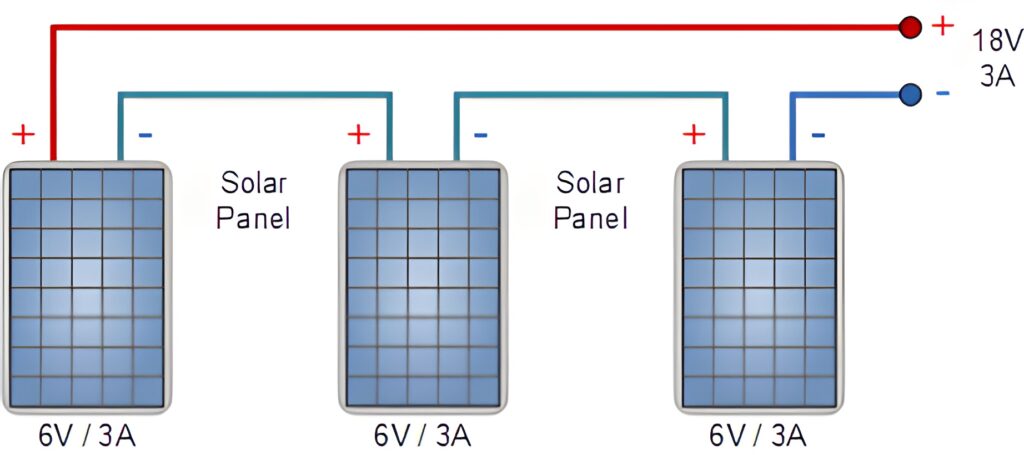
Wiring solar panels in series involves connecting the positive terminal of one panel to the negative terminal of the next, and so on. After connecting the panels in series, the resultant voltage will equal the sum of their individual voltages. However, the total current will be equivalent to the output current of a single panel.
As you can see from the above image, connecting 3 solar panels with 6 volts and 3 amps specs resulted in a total voltage of 18 volts ( 6v + 6v + 6v ) and a total current of 3 amps.
When to Use Series Connection?
When there is no shadow, a series connection of solar panels will provide the most energy. It is important to keep in mind that even partial shading of a single panel in a series array can significantly reduce the system’s overall power output. There is extreme importance for each individual panel in a series connection.
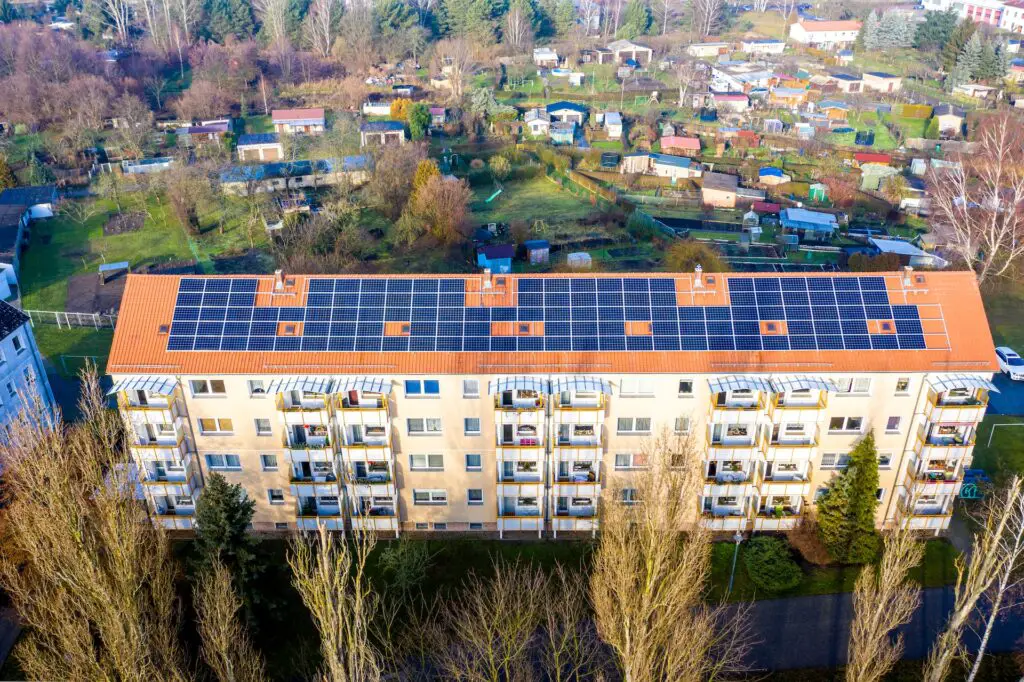
Solar panels connected in series are also the way to go if you require a low-amperage solution. Because of the reduction in current, thinner gauge wires may be used, making the wiring project cheaper and less complicated to manage. However, these savings in wiring costs will be diminished when we buy the solar charge controller.
When connecting your panels in series, it is essential to employ a maximum power point tracking (MPPT) charge controller. This controller adjusts the solar panel voltage and current so that it is in harmony with the battery bank voltage. You will experience significant power loss if you utilize a PWM controller (which is cheaper than MPPT) because the controller will reduce the high voltage provided by the panel array to fit the battery’s requirements without adjusting the current, which will cause a great power loss.
Parallel Solar Panels Connection
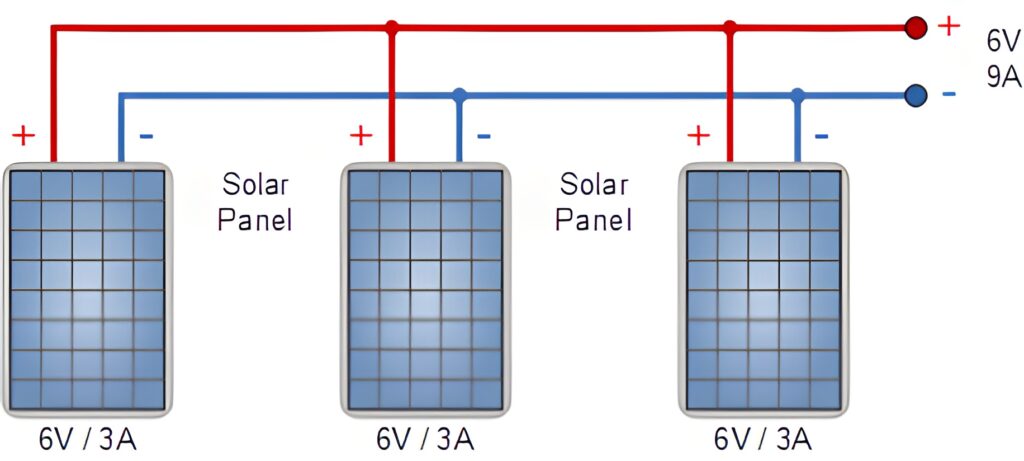
Wiring solar panels in parallel involves connecting all positive terminals of the panels together and all negative terminals together. After connecting the panels in parallel, the resultant current will equal the sum of their individual currents. However, the total voltage will be equivalent to the output voltage of a single panel.
As you can see from the above image, connecting 3 solar panels with 6 volts and 3 amps specs resulted in a total current of 9 amps ( 3A + 3A + 3A ) and a total voltage of 6 volts.
When to Use Parallel Connection?
Having solar panels set up in parallel is the most effective method for dealing with varying shading conditions since solar panels in this connection are independent of each other. Even if some of your solar panels become shaded, the rest of the array will keep producing energy as normal.
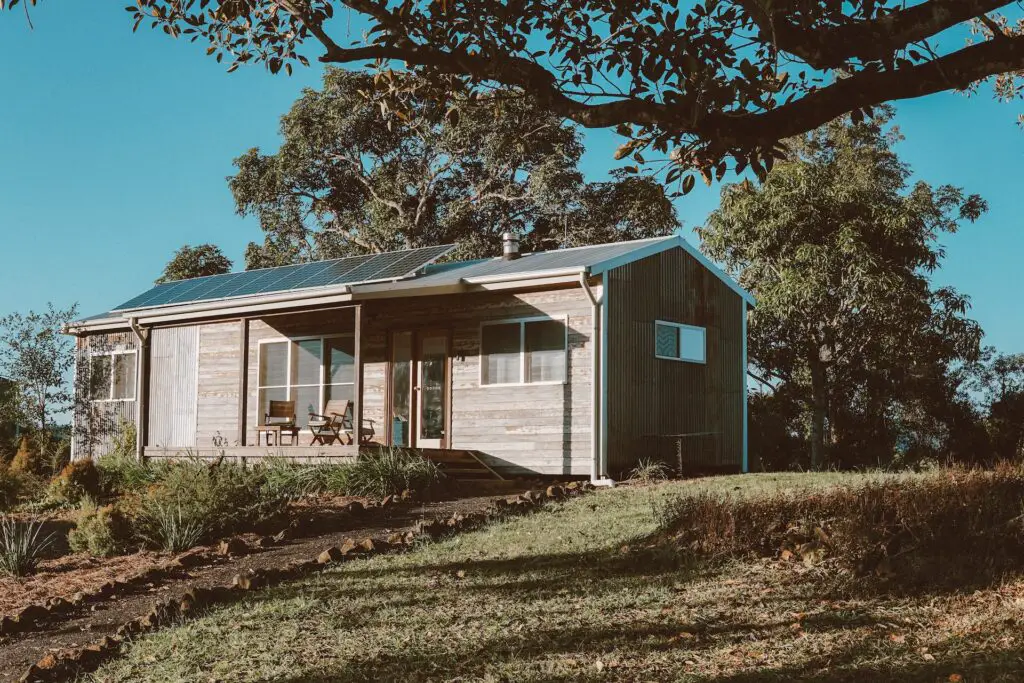
This parallel configuration leads to a low-voltage system which is ideal to use with a cheap PWM controller. Again, the total output voltage is unaffected by the number of solar panels used if they are wired in parallel. Therefore, a parallel array allows you to have a low voltage that is close to the required for battery charging, which means a very minimum power loss by the PWM controller.
Series vs Parallel Connection – Which is Better?
Understanding the differences between series and parallel wiring for solar panels allows us to discuss which method is preferable. Which is better, wiring solar panels in series or in parallel? Once again, though, it’s going to rely on your specific needs and requirements.
Series Connection
If you plan to spend the vast majority of your time in unshaded areas, a series connection of your solar panels is likely to yield the best results. This is because your solar panel system will be at its most productive in the early morning, late afternoon, and during overcast weather. Let me explain why:
All batteries require a charging voltage higher than their rated one. For example, lead acid 12-volt batteries will require between 13 to 14.5 volts to charge efficiently. Having solar panels connected in series means a higher voltage output, which means the array can provide sufficient voltage throughout the day.
Most 100-watt solar panels have a voltage of around 18 volts, meaning that a parallel array must operate at least at 80% capacity (14.5/18 x 100) to provide 14.5 volts to charge the battery. However, with a series array of 4 panels having a total voltage of 72 volts (18v x 4), the array could work on as low as 20% (14.5/72 x 100) to charge the battery.
It is significantly easier to maintain a 20% capacity even in the afternoon or on overcast days. One must remember that an MPPT charge controller is essential for such a high-voltage setup to be successful.
Parallel Connection
Parallel wiring your solar panels isn’t always a terrible idea. MPPT charge controllers may be overkill for small portable applications because of their high cost. A parallel system might benefit an RV or boat with a modest low-voltage system and potentially varying lighting conditions. The cost of such a system can be reduced by using a PWM charge controller, which is widely available at a cheaper cost.
Mixed Solar Panels Connection
Each of our previous examples has presumed that a set of identical solar panels will be wired in series or parallel. This is highly recommended and the best course of action, but it is not necessary. It is feasible to use solar panels from different manufacturers with varying electrical ratings, but doing so requires strict adherence to certain requirements:
- All of your solar panels should have the same current rating if you want to wire them in series. Although the voltages will add up, the current output will be limited to that of the panel with the lowest-rated current output.
- On the other hand, if you want to wire your solar panels in parallel, each panel must have the same voltage rating. The system’s output voltage is set to the lowest-rated panel’s voltage value.
Series Connection Example:
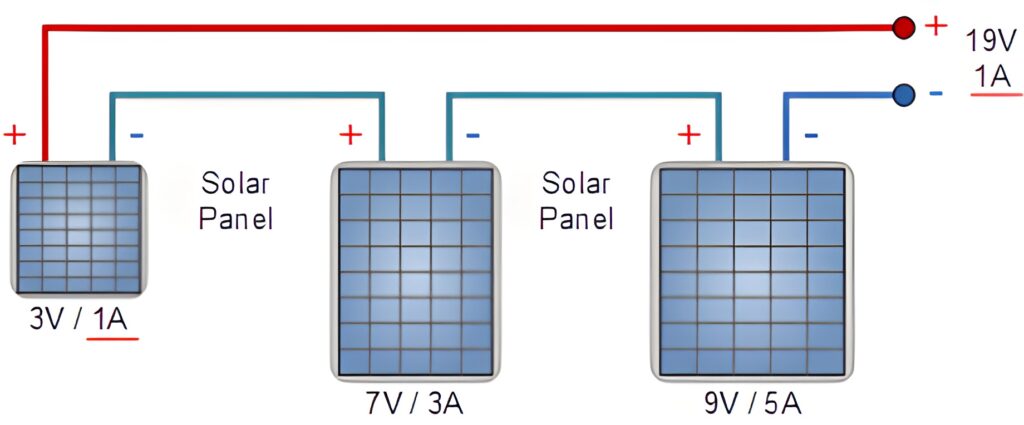
In the above example, we used 3 solar panels (3V / 1A) (7V / 3A) (9V / 5A), which means the array will have a total power output of 19 watts (19V x 1A). However, if the first 2 panels had a current output of 5A, then the total power output would be 95 watts (19V x 5A).
Parallel Connection Example:
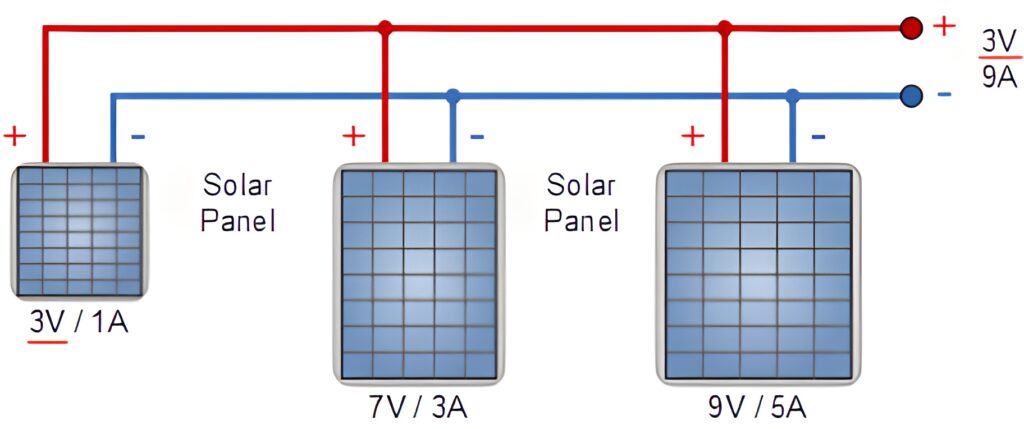
In a parallel connection, the array will have a total power output of 27 watts (3V x 9A). If the first two panels have a 9 volts output, then the total power output will be 81 watts (9V x 9A).
Mixed Solar Panels Series-Parallel Connection Calculator
In the case that you have different specs solar panels with different voltages and currents. It is recommended that identical panels be used in each array connected to a charge controller. Maximum solar output can be achieved by employing a combination of solar panel types and numerous charge controllers, with each panel array connected to its own controller. We have covered the topic of connecting multiple solar controllers to a single battery bank extensively before. Go ahead and read it.
However, if having multiple charge controllers is going to be a costly solution for you and you don’t mind losing some of your panel’s total power output, then this calculator will help you out:
Use this calculator to add up to 5 different types of solar panels. Input the specs for each type and the number of panels, then scroll down for the results and find the most efficient configuration.
Series / Parallel Connections – Pros & Cons
Each connection type has its pros and cons. Let’s find them out.
Series Connected Panels
Pros
- Amperage (current) is low, allowing for cheaper, smaller-gauge wire use.
- Series arrays perform better all day and afternoon.
Cons
- Doesn’t do well when partially shaded; the output of a series-connected array reduces when even a single panel is blocked.
- Due to higher voltage output, costly MPPT controllers are required.
Parallel Connected Panels
Pros
- Functions properly in shady conditions; when one panel in a parallel array is blocked by shadow, the others will keep on producing energy as usual.
- Due to lower voltage output, cheaper PWM controllers could be used.
Cons
- Requires fusing the solar panels.
- Due to higher currents, the use of more costly, thicker cables is a requirement.
- Not as efficient in the mornings or evenings.
Conclusion
Wiring solar panels in series or parallel is a simple process. Knowing when to employ each is the challenge.
Due to the cost savings in wires and the all-day high voltage (in no shades), series wiring is my favorite approach. Using an MPPT charge controller, however, is required.
Parallel wiring might be more expensive due to the need for thick wiring and fusing. When you have small projects with 100 watts solar panels, a parallel connection is recommended along with a cheap PWM controller.
Always try to have the same type of solar panels in your system. This will eliminate any losses from the panel’s total power output. However, if you find yourself forced to use multiple specs panels, then the best way to do it is using the free calculator that we included above in this article.

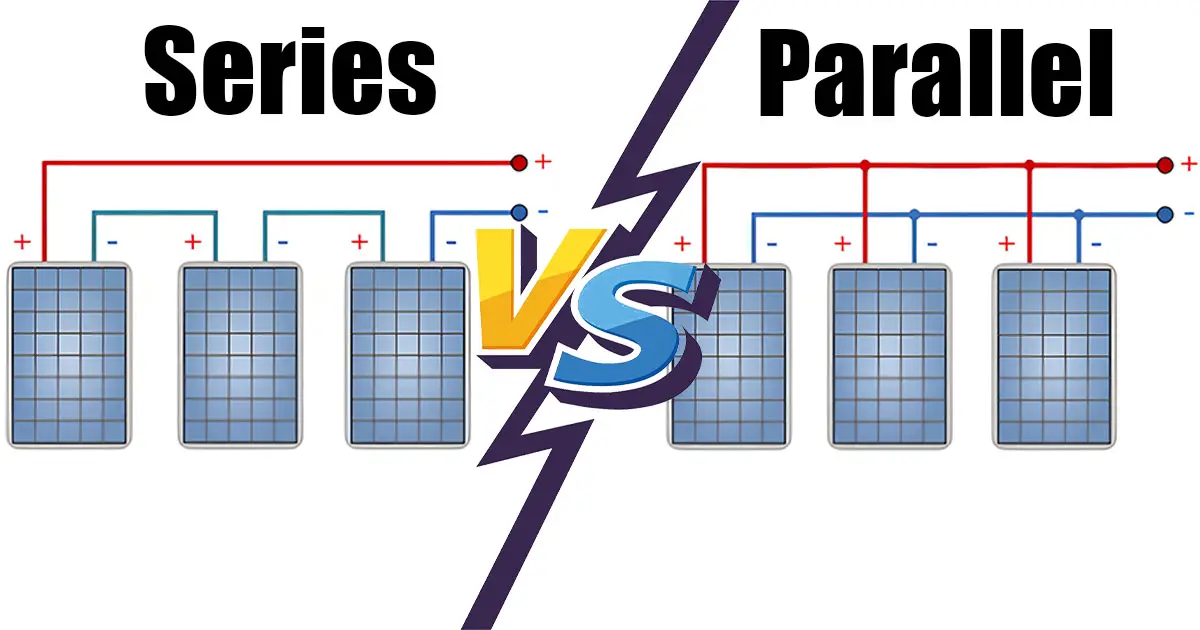
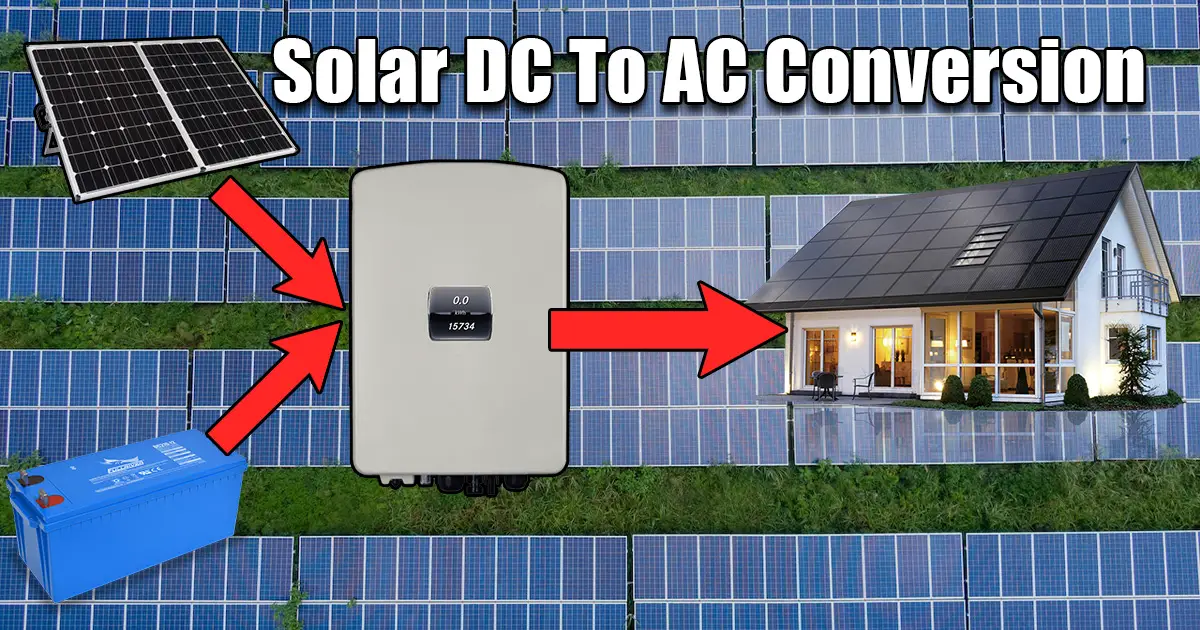
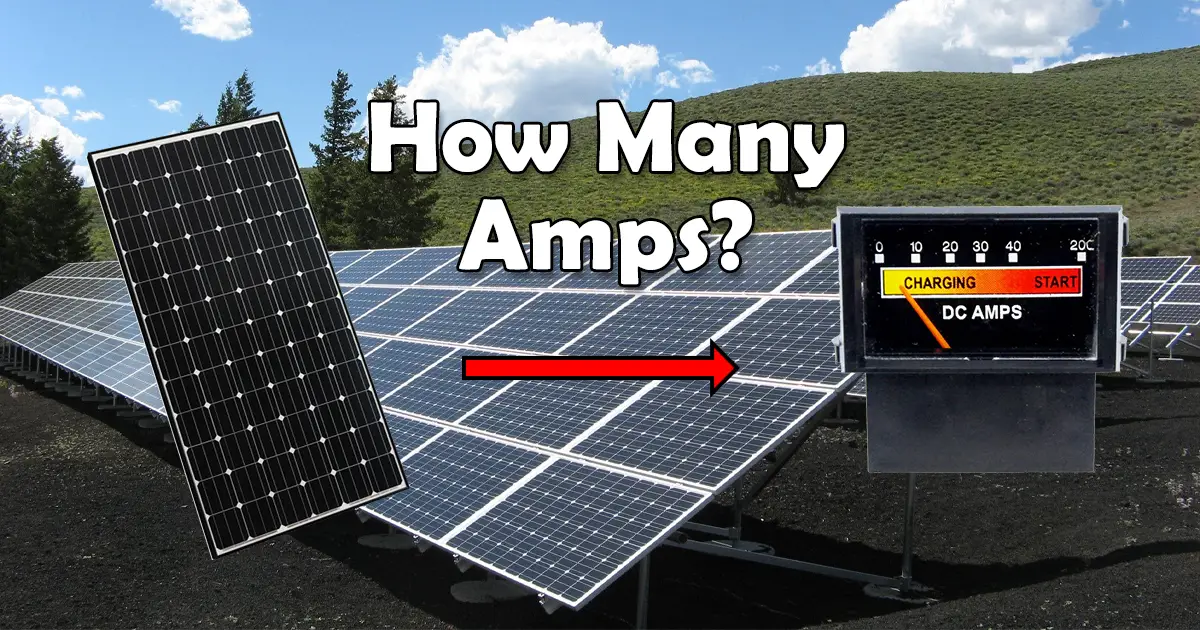
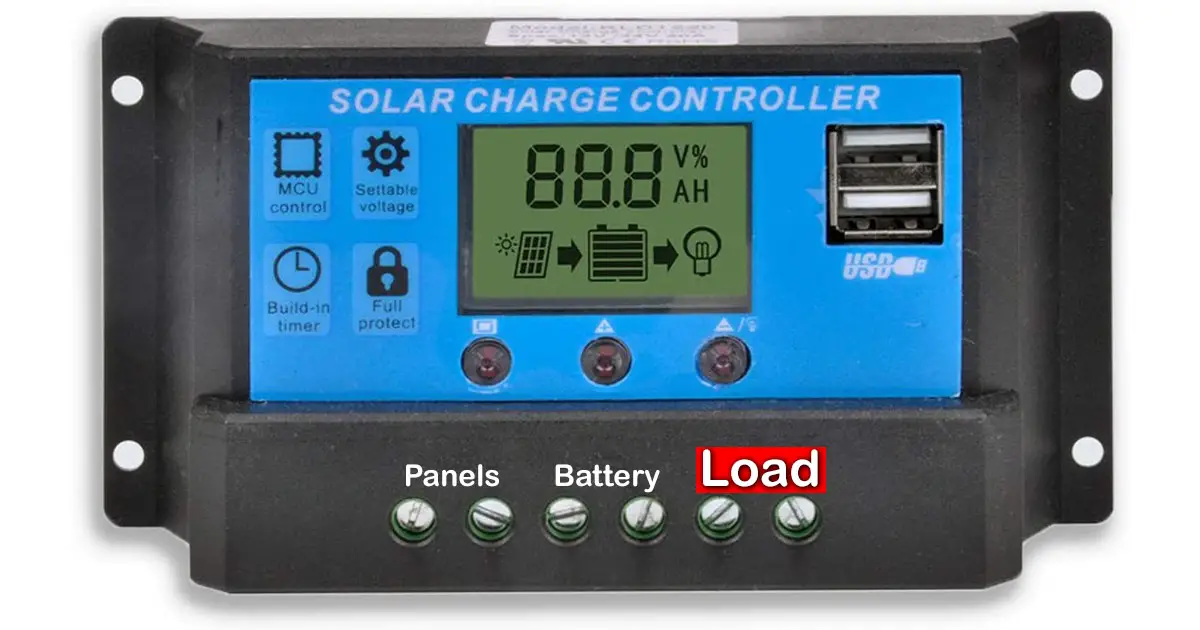
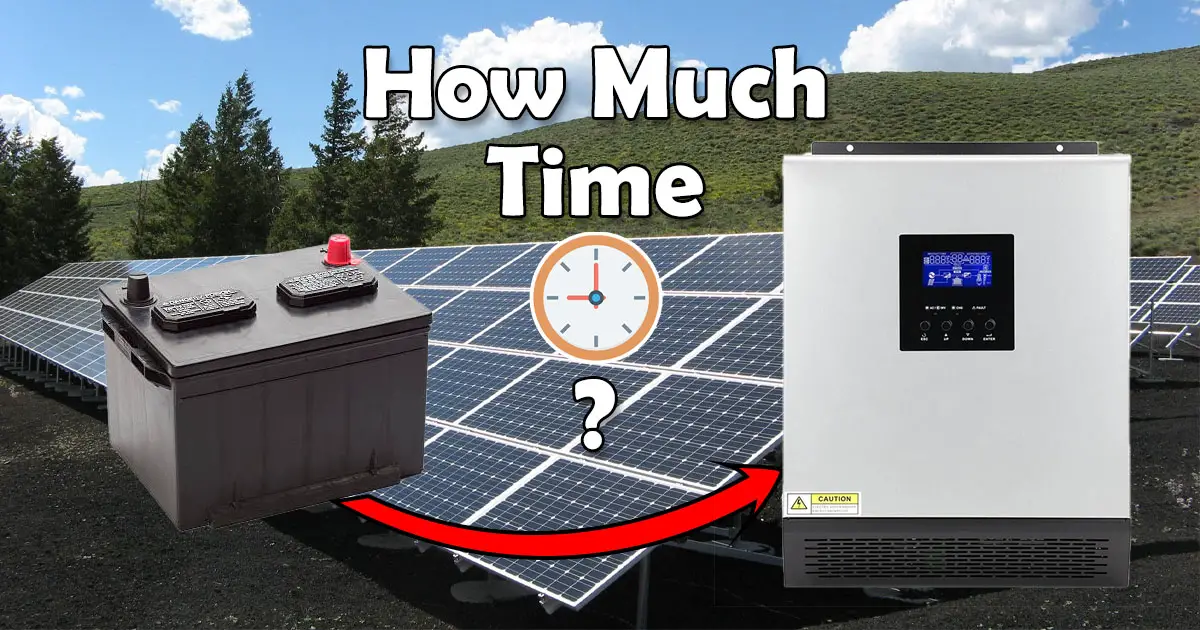
This article has been the most educative of all the articles that I have read concerning solar stuff. Thank you, Sir.
Thank you!
Ahmad, This was very informative. Thank you. In my case I have a particularly challenging situation because I have a hip roof, with a dormer on the West roof and a chimney that will cause partial shading during part of the day. It’s a fairly small house, so I have to have panels on my detached garage (which will experience intermittent shading). I wanted to put everything on facing East on one string and everything facing West on a second string, but the guy at the solar power store said that I should have four strings. Unfortunately, the Sol-Ark 12K only accepts two MPPT cables. I can’t seem to find anything on the internet that addresses a situation like mine. If you have any suggestions, I would appreciate them. I attached drawings of the roof configuration. Thanks!